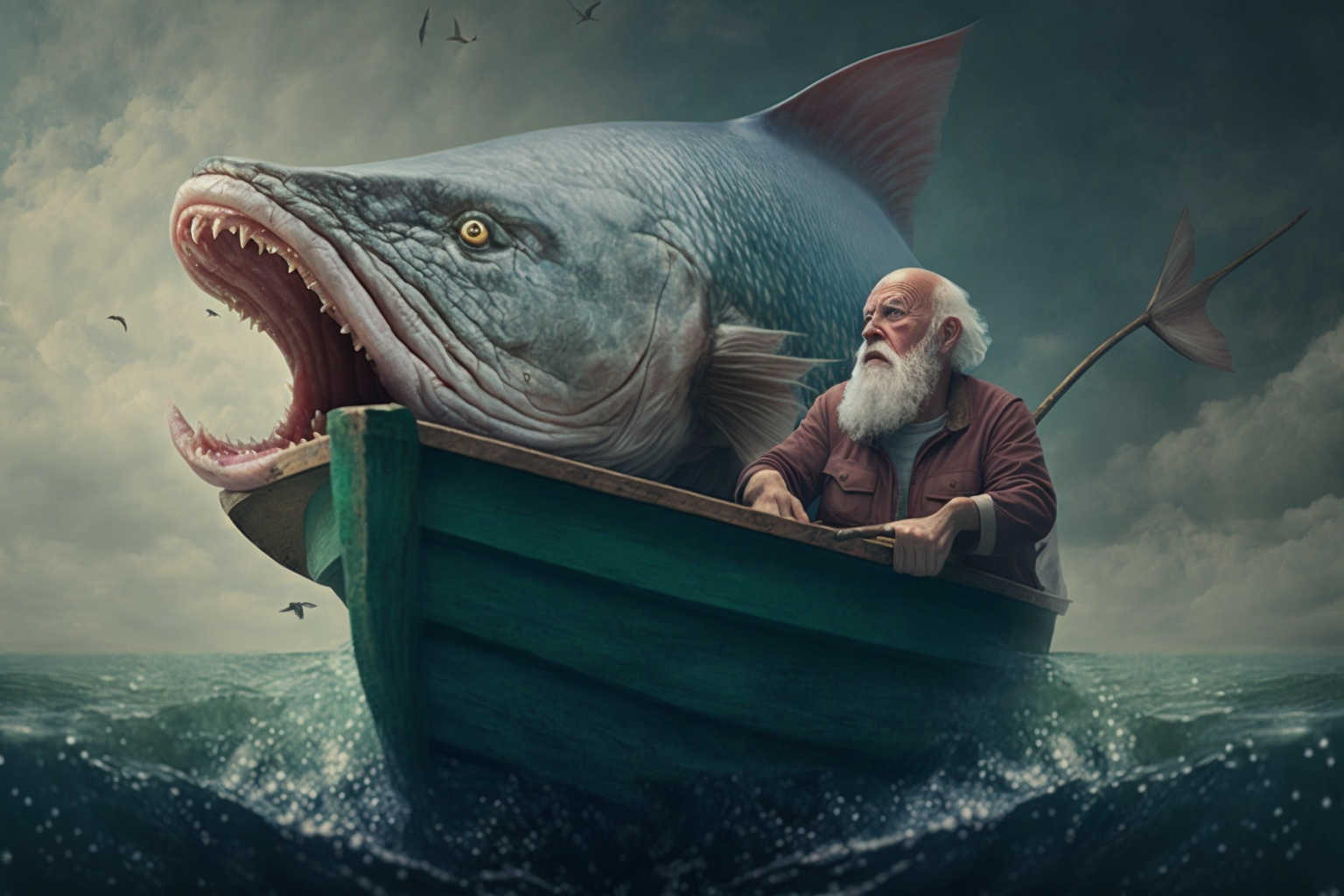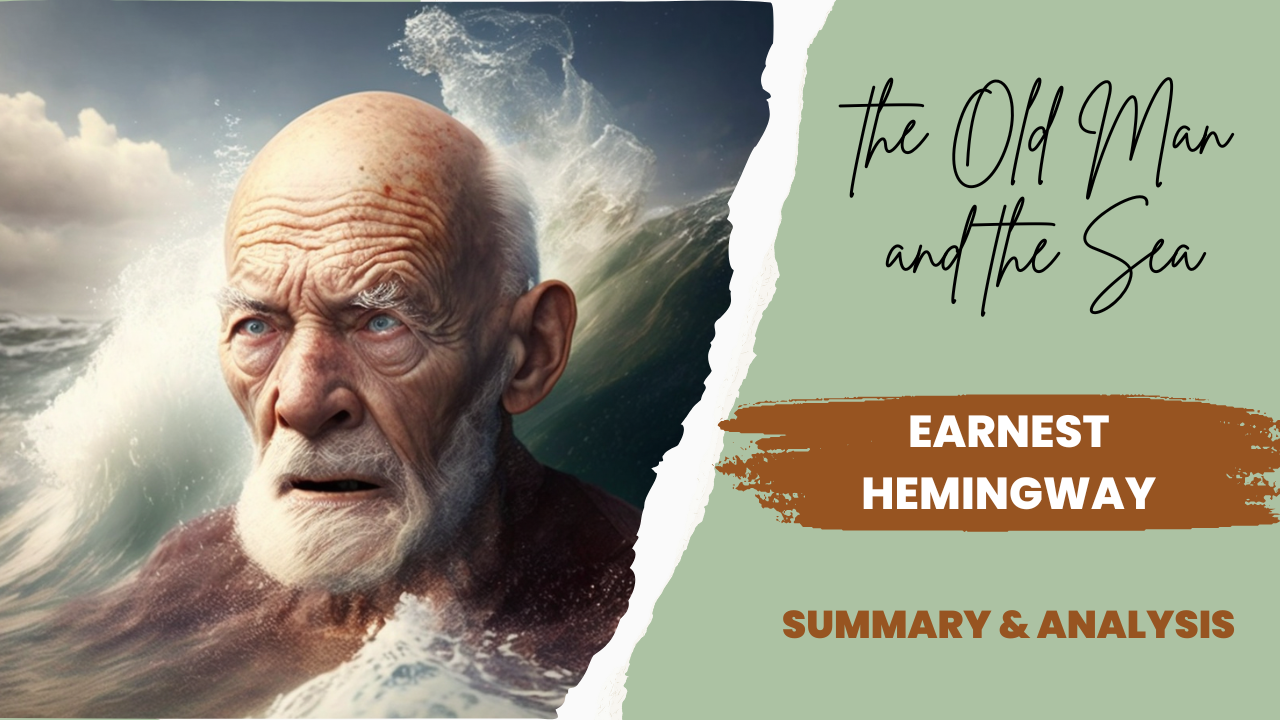The Old Man and the Sea
Summary and Analysis
The Story
“The Old Man and the Sea” is a novella written by Ernest Hemingway and published in 1952. The story is set in a small fishing village in Cuba and revolves around an elderly fisherman named Santiago, who has not caught a fish in 84 days. Santiago’s character represents the quintessential Hemingway hero – tough, stoic, and determined.
The story opens with Santiago waking up before dawn and preparing his skiff for another day of fishing. He decides to venture out further into the Gulf Stream, hoping to catch a large fish that will bring him financial success and restore his reputation as a skilled fisherman. After several hours of waiting, Santiago feels a tug on his line and realizes that he has hooked a large marlin. What follows is a battle between man and fish as Santiago tries to reel in the massive marlin, which he estimates to be over 18 feet long and 1500 pounds in weight.
Santiago’s struggle with the marlin lasts for three days and three nights, during which he endures physical and mental exhaustion, hunger, thirst, and pain. He is determined to catch the fish, but he also develops a sense of admiration and respect for his opponent. Despite his efforts, Santiago is unable to bring the marlin onto his boat, and the fish slowly drags him further and further out to sea.
During his journey, Santiago battles with sharks who are attracted by the scent of the marlin’s blood. He manages to fend them off with a harpoon and a makeshift weapon made of a club and a knife. However, the sharks gradually eat away at the marlin until only the skeleton is left.
Finally, Santiago returns to the village, exhausted and empty-handed, with only the marlin’s skeleton as proof of his epic struggle. Although he has not achieved his goal of catching a fish, he has gained a new sense of purpose and determination in life. The story ends with Santiago falling into a deep sleep, dreaming of lions on the beaches of Africa.
“The Old Man and the Sea” is a tale of perseverance, courage, and the power of the human spirit. It is a story of a man who faces seemingly insurmountable odds and refuses to give up, even in the face of a certain defeat. Hemingway’s spare and simple prose style conveys the story’s emotional depth and captures the essence of the human condition. The novella is a timeless masterpiece that continues to captivate readers with its timeless themes and timeless characters.

The Analysis
Ernest Hemingway’s “The Old Man and the Sea” is a timeless masterpiece of American literature. Published in 1952, it is a story that reflects the struggles of an aging fisherman, Santiago, who sets out on a journey to catch a giant marlin in the Gulf Stream. The novella, which won Hemingway the Pulitzer Prize in 1953, tells a tale of resilience and determination in the face of overwhelming odds.
One of the key themes in the novel is the relationship between man and nature. Santiago is portrayed as a man who has lived his entire life on the sea and who respects and understands the natural world. Throughout the story, he demonstrates his knowledge and appreciation of the sea, describing it as a living entity with its own moods and character. In contrast, the other characters in the story, such as the young boy Manolin and the tourists, have a more superficial relationship with the sea, using it only as a means of making a living or for entertainment. This contrast serves to highlight Santiago’s deep connection with nature and his unique perspective on the world.
Another important theme in the novel is the struggle of the individual against the forces of society. Santiago is portrayed as a man who is at odds with the world around him. He is poor and has no family, and he is mocked by the other fishermen for his lack of success. Despite this, he refuses to give up and remains determined to catch the marlin, even when it seems like an impossible task. His determination and perseverance in the face of adversity are inspiring and serve as a reminder that success is not always measured by material wealth or social status.
The character of Santiago is also symbolic of the human experience. His struggles and triumphs represent the universal struggles that all people face in life. His physical and emotional journey is a metaphor for the struggles of the human condition. Through Santiago’s experiences, Hemingway explores the themes of suffering, endurance, and redemption, which are central to the human experience.
Hemingway’s writing style is simple and direct, yet it is also powerful and evocative. He uses vivid descriptions to create a vivid image of the world of the novel. The language is spare and precise, and the dialogue is realistic and authentic. This writing style is reflective of Hemingway’s own experiences as a journalist and war correspondent, where he developed a style that emphasized clarity and concision.
The novella’s structure is also noteworthy. It is divided into short chapters, each of which focuses on a specific event or moment in the story. This structure allows the story to move quickly and creates a sense of urgency and tension. It also emphasizes the cyclical nature of Santiago’s journey, as he battles the marlin, sharks, and the elements in his quest to bring the fish to shore.
Despite the novella’s strengths, some critics have criticized the book for its lack of depth and character development. Santiago is portrayed as a heroic figure, but he is also a somewhat one-dimensional character. The other characters in the story are similarly underdeveloped, and their motivations and emotions are not explored in depth. However, this criticism can be seen as a deliberate choice on Hemingway’s part. His writing style emphasizes simplicity and directness, and the characters are meant to represent universal themes and experiences, rather than individual personalities.
In conclusion, “The Old Man and the Sea” is a masterpiece of American literature. Hemingway’s simple and direct writing style, combined with his vivid descriptions and powerful themes, make this novella a timeless work of art. The story of Santiago’s journey is a reminder of the resilience and determination of the human spirit, and his struggles and triumphs represent the universal experiences that all people face in life.

